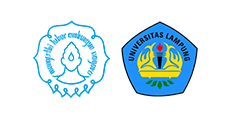Exploration of Critical Thinking Skills in Digital Citizenship Course Through Online Learning
Abstract
Keywords
Full Text:
PDFReferences
Anggraeni, A., Supriana, E., & Hidayat, A. (2019). Pengaruh Blended Learning terhadap Kemampuan Berpikir Kritis Siswa SMA pada Materi Suhu dan Kalor. 758–763.
Anggraini, W. D., & Bachri, B. S. (2018). Pengaruh Pemanfaatan Edmodo pada Pembelajaran E-learning terhadap Hasil Belajar Peserta Didik Kelas X Multimedia pada Mata Pelajaran Simulasi dan Komunikasi Digital di SMK NEGERI 1 JAMBON. Jurnal Mahasiswa Teknologi Pendidikan, 9(2).
Bezanilla, M. J., Fernández-Nogueira, D., Poblete, M., & Galindo-Domínguez, H. (2019). Methodologies for teaching-learning critical thinking in higher education: The teacher’s view. Thinking Skills and Creativity, 33(June), 100584. https://doi.org/10.1016/j.tsc.2019.100584
Hidayati, N. (2017). Efektivitas Pembelajaran Menggunakan Multimedia Interaktif (Adobe Flash CS6) terhadap Hasil Belajar Matematika Siswa Kelas V SDN Jurug Sewon. Trihayu: Jurnal Pendidikan Ke-SD-An, 3(3), 169–172.
Jesson, R., McNaughton, S., Rosedale, N., Zhu, T., & Cockle, V. (2018). A mixed-methods study to identify effective practices in the teaching of writing in a digital learning environment in low income schools. Computers and Education, 119, 14–30. https://doi.org/10.1016/j.compedu.2017.12.005
Ketut Sudarsana, I., Bagus Made Anggara Putra, I., Nyoman Temon Astawa, I., & Wayan Lali Yogantara, I. (2019). The use of Google classroom in the learning process. Journal of Physics: Conference Series, 1175(1). https://doi.org/10.1088/1742-6596/1175/1/012165
Khaharsyah, A. (2019). The Development of Android-Based Learning Media for Light Vehicle Engineering Skill Students of SMKNegeri 2 Pengasih. Journal of Physics: Conference Series, 1273(1). https://doi.org/10.1088/1742-6596/1273/1/012007
Kong, S. C. (2015). An experience of a three-year study on the development of critical thinking skills in flipped secondary classrooms with pedagogical and technological support. Computers and Education, 89, 16–31. https://doi.org/10.1016/j.compedu.2015.08.017
Kuzmanovska, D. (2019). Enhancing Learning Autonomy in an ESP Class by Using LMS Google Classroom (Vols. 10, No 14, Issue ISSN 1857-7059, pp. 77–84).
Kwon, K., Park, S. J., Shin, S., & Chang, C. Y. (2019). Effects of different types of instructor comments in online discussions. Distance Education, 40(2), 226–242. https://doi.org/10.1080/01587919.2019.1602469
Lestari, D., S, S. M. E., & Susanti, R. (2016). Pengembangan Perangkat Blended Learning Sistem Saraf Manusia Untuk Meningkatkan Keterampilan Berpikir Kritis. Journal of Innovative Science Education, 5(1), 83–93. http://journal.unnes.ac.id/sju/index.php/jise
Nizal, I., Shaharanee, M., Jamil, J. M., Syamimi, S., & Rodzi, M. (2016). The Application of Google Classroom as a Tool for Teaching and Learning. Journal of Telecommunication, Electronic and Computer Enginering, 8(10), 5–8.
Okeniyi, Joshua, O., Elizabeth, T., Atayerp, & Aaron, A. (2020). Implementation of Data Normality Testingas a Microsoft Excel Library Function by Kolmogorov Smirnov Goodness-of-fit Satistics (pp. 2561–2578).
Putranta, H., Jumadi, & Wilujeng, I. (2019). Physics learning by PhET simulation-assisted using problem based learning (PBL) model to improve students’ critical thinking skills in work and energy chapters in MAN 3 Sleman. Asia-Pacific Forum on Science Learning and Teaching, 20(1), 1–45.
Rahmad, R., Adria Wirda, M., Berutu, N., Lumbantoruan, W., & Sintong, M. (2019). Google classroom implementation in Indonesian higher education. Journal of Physics: Conference Series, 1175(1). https://doi.org/10.1088/1742-6596/1175/1/012153
Rosita, N., Saun, S., & Mairi, S. (2019). Google Classroom for hybrid learning in senior high school. Journal of Learning and Teaching in Digital Age, 5(1), 35–41.
Sepriana, R., Sefriani, R., Wijaya, I., & Lestari, P. (2019). Pengujian Validitas Modul Interaktif Simulasi dan Komunikasi Digital Berbasis Macromedia Director MX. Jurnal Ilmu Pendidikan, 1(3), 120–126.
W.Creswell, J., & Creswell, J. D. (2018). Research Design.
Widana, I. W. (2017). Higher Order Thinking Skills Assessment (Hots). Jisae: Journal of Indonesian Student Assesment and Evaluation, 3(1), 32–44. https://doi.org/10.21009/jisae.031.04
Yanuar, A., & Khotimah, K. (2018). Pengembangan Media Video Pembelajaran Mata Pelajaran Simulasi dan Komunikasi digital Materi Mengkomunikasikan Gagasan untuk Kelas X TKJ 1 SMK PGRI 13 Surabaya. Jurnal Teknologi Pendidikan 0, 0(01), 0-4 PENDAHULUAN.













